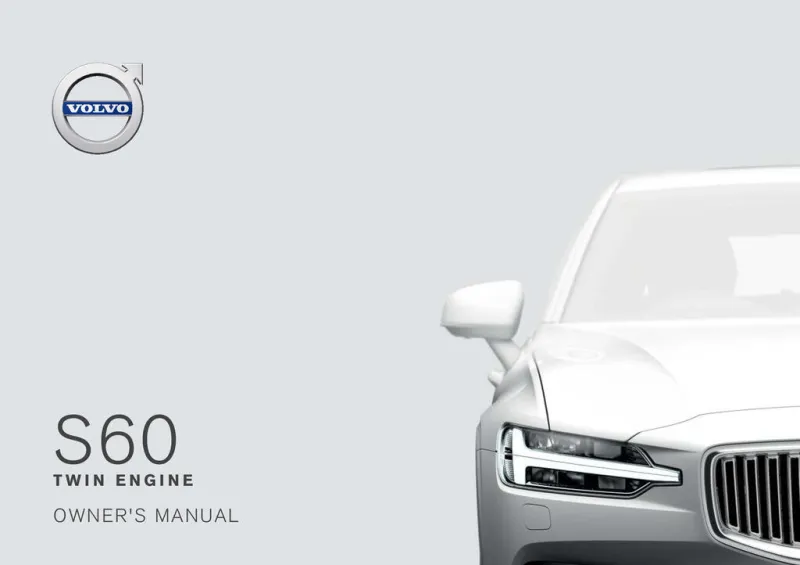2019 Volvo S60 Twin Engine Owner's Manual

Table of Contents
2019 Volvo S60 Twin Engine Overview
Introduction
The 2019 Volvo S60 Twin Engine is a remarkable embodiment of modern engineering and luxurious design, combining a spirited driving experience with eco-conscious technology. With an innovative plug-in hybrid setup, the S60 Twin Engine presents a seamless blend of performance and efficiency, making it an ideal choice for discerning drivers who prioritize sustainability without compromising on power or style.
Powertrains
At the heart of the 2019 S60 Twin Engine is an advanced powertrain that merges a turbocharged gasoline engine with an electric motor. This configuration delivers a combined output of approximately 400 horsepower, propelling the sedan from 0 to 60 mph in just under 5 seconds. The electric motor provides an all-electric driving range suited for daily commutes, while the gasoline engine ensures exhilarating performance during long drives. The car boasts three driving modes—Hybrid, Pure, and Power—allowing drivers to tailor their experience to their preferences and driving environment.
Trims
The 2019 Volvo S60 Twin Engine is available in several trims to suit varying tastes and requirements. Each trim level comes richly appointed, offering a range of features and options. Starting with the Momentum trim, the S60 provides a comprehensive list of amenities, while the Inscription trim enhances luxury with upgraded materials and finishes. The Polestar Engineered trim elevates performance even further, ensuring an exhilarating driving experience for enthusiasts.
Features
This model is equipped with cutting-edge technology and safety features, including a customizable digital instrument cluster, a premium sound system, and a state-of-the-art infotainment system. Safety is paramount with advanced driver assistance systems, ensuring peace of mind on every journey. In addition, the high-quality interiors come with leather seating, ambient lighting, and ample cargo space, redefining comfort in the luxury sedan segment.
Owner's Manual
The owner's manual for the 2019 Volvo S60 Twin Engine serves as an essential guide for new owners. It provides detailed information on vehicle operation, maintenance schedules, and safety features. By referring to the manual, owners can familiarize themselves with the innovative technologies of the S60, ensure optimal performance, and maximize the vehicle's lifespan, making every drive an enjoyable experience.
User manual download
The Volvo S60 Twin Engine owner manual for the 2019 model year is to be found in PDF downloadable format on this page. The owner manual for the model year 2019 is free and in English, but the repair manuals are usually not easy to get and may cost more.
Manual Questions
Fill the form below and someone will help you!
